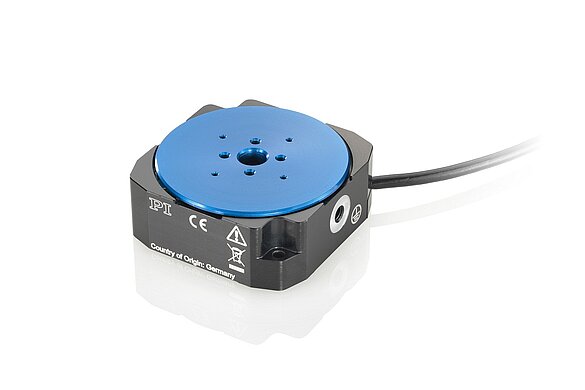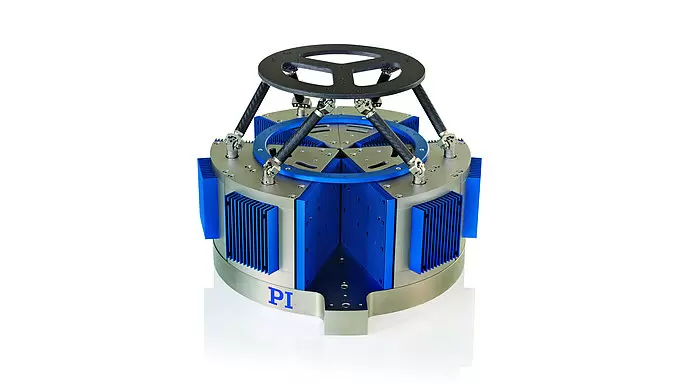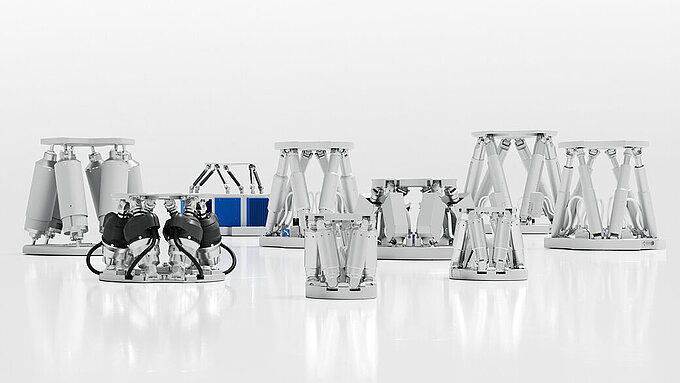尽管光线条件不佳依然可以拍摄清晰的照片,拍摄快照而不模糊,识别交通标志和道路标记,或利用特定系统识别危险情况-所有这一切如今都可以借助于现代相机而得以实现。然而相机或智能手机的静态和视频图像质量究竟如何?并且与其他供应商的型号相比又如何呢?
最终用户、智能手机和相机制造商、汽车或航空航天、医疗与安全或自动化技术领域的公司-他们都对静态和视频图像的质量提出了较高的要求,并积极寻求这些问题的答案。
DxOMark Image Labs公司直面这些问题并寻求提供解决之道。该公司为客户提供咨询服务和完整的图像质量测试实验室解决方案。此类解决方案由硬件、软件和测试协议组成,并且可确保可重复的、与操作人员无关的结果。DxOMark Image Labs市场营销副总裁Nicolas Touchard在接受PI Karlsruhe的采访中,介绍了评估静态和视频图像质量的方法以及如何在图像稳定技术的测试中使用PI六足位移台。
有哪些关键的图像质量属性?
根据特定的关键图像质量属性评估每台相机。图像质量属性包括分辨率、对比度、颜色、纹理、缩放、自动对焦、曝光和图像稳定等。对于每一项属性,均拍摄并评估数千幅图像以获取具有统计意义的结果。为了使图像质量具有可比性,必须始终在相同条件下采用相同的方法测试相机和相机组件。DxOMark评估所依据的测量方法是与在IEEE / CPIQ和ISO TC42-WG18等国际标准化工作组中开展合作的成像行业内的数家公司共同开发的。
Sample Positioning Is Particularly Important
The positioning of the sample plays a special role since the sample is moved linearly or rotated as required. For this purpose, PI (Physik Instrumente) supplies several subsystems. "We are proud to be among the seed supporters and sponsors of Jan Huisken’s groundbreaking Flamingo project," says Dr. Thomas Bocher, the Head of Segment Marketing 'Microscopy & Life Sciences' at PI. "For the Flamingo project, reliability and precision of modules are key factors. This means, high precision, fast movements, and a compact size of the drives together with high quality production standards and services from PI make the difference."
图像稳定测试– PI六足位移台模拟相机运动
图像稳定测试评估内置于相机中的光学和电子图像稳定系统的工作情况。这些系统旨在补偿运动,因此避免了模糊图像。
在与图像稳定相关的所有测试程序中,相机在多根轴上的重复精度非常重要。“我们必须确保每次测试的模拟频率和运动都是相同的,例如围绕旋转轴θX、θY、θZ(俯仰、偏航、滚转),”Nicolas Touchard强调说。例如,在测试相机和智能手机时,需要高达约12赫兹的频率来模拟人手的颤抖,而驾驶辅助系统中的图像稳定则需补偿更高的频率。
可以通过六足位移台模拟相机运动,例如>> H-840。六轴定位系统专为测试图像稳定系统而设计,并通过了>> CIPA的DC-011-2015标准认证。该标准定义了认证所需的转动轴、测试频率和振动振幅。
为实现平滑运动和频率范围的高要求,PI推出了H-860六足位移台。该系统提供30赫兹的模拟频率,并能够以高轨迹精度运行预定义的运动曲线、正弦曲线和可自由定义的路径。由于采用无摩擦的音圈驱动器和由具刚性的碳纤维部件和低移动质量组成的轻量化设计,因此可以实现快速平稳的运动以及高加速度。
可以通过六足位移台模拟相机运动,例如>> H-840。六轴定位系统专为测试图像稳定系统而设计,并通过了CIPA的DC-011-2015标准认证。该标准定义了认证所需的转动轴、测试频率和振动振幅。
为实现平滑运动和频率范围的高要求,PI推出了H-860六足位移台。该系统提供30赫兹的模拟频率,并能够以高轨迹精度运行预定义的运动曲线、正弦曲线和可自由定义的路径。由于采用无摩擦的音圈驱动器和由具刚性的碳纤维部件和低移动质量组成的轻量化设计,因此可以实现快速平稳的运动以及高加速度。
了解关于H-860的更多信息
Rotating the specimen can be useful in several scenarios. Often, researchers want to be able to image their sample from just the right angle (side view, top view etc.) or want to image an organ that’s only visible from certain angles (like the heart). The other big application for rotation is so-called multi-view imaging, where z-stacks are recorded from multiple angles, e.g. 6 angles covering 360 degrees, and then the useful parts of each dataset are fused to generate one 3D image that covers the entire sample. This is particularly useful for larger samples as the sample itself scatters, refracts and absorbs the light, affecting the illumination and detection quality of structures deep inside the sample. Therefore several angles are needed to capture all the details.
The rotation of the sample is supported by the U-628 ultrasonic piezo-motor-driven rotation stage from PI. It offers fast movement of up to 720°/s at a minimum step size of 51 µrad and a bidirectional repeatability of ±102µrad.
Motivation and Philosophy behind the Flamingo Project
Jan Huisken, co-inventor of Light Sheet Microscopy when working on his PhD at the EMBL Heidelberg (Germany), has recently started this project and states, "We aim to democratize high-end light microscopy, bringing it to campuses and labs for free. We think this will be especially useful for reproducing scientific results, something increasingly important to science." Michael Weber, the Field Application Specialist for the US East Coast in the Flamingo project adds, "We’re turning the idea of a research imaging facility upside down. We want to bring the microscope as close to the sample as possible, rather than biologists bringing their delicate samples to us." Bringing the microscope to the biologist has one major advantage: Neither the biologist, nor the sample have to travel. Since most of the samples are highly sensitive to changing environmental conditions (e.g., gravity, humidity, temperature), this approach helps researchers to focus on their work rather than caring for logistics.
The project also aims to intensify the dialogue between system developers and users in order to further the development of the LSFM technology.
Outlook
The second Flamingo system has already been set up on the East Coast of the United States. In the months and years to come, several dozens of Flamingos will be built to meet the enormous demand for state-of-the-art light sheet microscopes for research in the US and many other countries around the world. Thomas Bocher states, "PI will continue to support this philanthropic endeavor."




